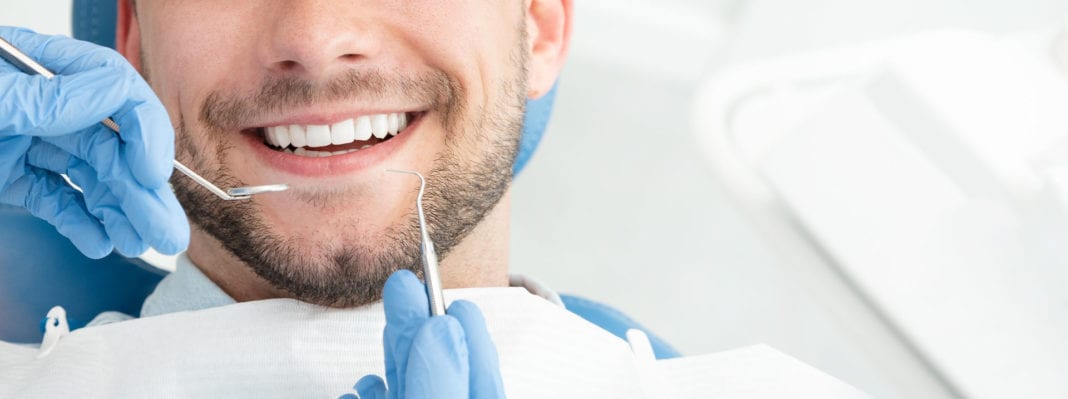Teeth and Gums: The Basics
Healthy teeth and gums allow you to share a smile with confidence and can affect your overall health. For the best advice on good dental hygiene, Michael C. Fling, DDS, and Cama D. Cord, DDS, with OKC Dental Arts share their top tips.
Consistency and Technique Matter
Brush your teeth for two minutes, twice a day. Electric toothbrushes remove more plaque than a manual toothbrush when used correctly. However, the type of toothbrush is not as important as the result of whatever technique and toothbrush is used.
Floss Correctly
Regular flossing helps prevent decay in between teeth and helps prevent periodontal disease. Any kind of floss can be effective if used correctly. One of the biggest issues with dental floss is improper use. So if you’re unsure how to use it, ask your dental hygienist to show you how.
Consider Mouthwash
Mouthwash is a great addition to your oral health care, but it might not be for everyone. The advantage of a mouthwash such as Listerine is that it is bactericidal, meaning it kills bacteria. Your dentist can, however, prescribe other rinses, such as chlorhexidine, that are also bactericidal.
Schedule Regular Dental Visits
The best way to keep your teeth and gums healthy is through regular visits to your dentist, along with consistent home care. Genetics can play a significant role in dental outcomes, so it’s critical to have a comprehensive diagnosis and an appropriate treatment plan. It has been shown that patients who have autoimmune issues, are smokers or have genetic predispositions can have more significant levels of periodontal disease and dental breakdown. However, preventive measures can help reduce dental expenses and offer a better prognosis of dental health.
Oral Surgery
As an oral surgeon, Heath Evans, DDS, with Eastern Oklahoma Oral and Maxillofacial Surgery, says he provides a wide scope of treatment for patients.
“We deal with issues related to the teeth, jaws and face – which includes tooth removal, dental implants, bone grafting, corrective jaw surgeries, benign and malignant pathology, and fractures of the bones of the face,” he says.
Evans says improvements in technology has changed several areas of his practice, such as an increased use of advanced radiography.
“A cone beam CT (CBCT) can offer 3D views of a patient’s anatomy and allow the doctor to offer more specific treatment options tailored to the patient’s unique needs,” he says. “It also offers more understanding of the surgery prior to the procedure in an effort to minimize complications. They are not needed in all instances, but can be helpful for patients with anatomical challenges.”
His practice also uses an intraoral scanner in place of impressions for surgery patients and those in need of implant restorations. The CBCT and the intraoral scanner can be combined to create a 3D virtual surgery for patients requiring corrective jaw surgery, which allows surgeons to pre-plan the surgery for the best results.
In addition, Evans says dental implants have come a long way.
“Many patients that were previously not candidates can now be safely treated,” he says. “Bone grafting is more predictable and less invasive than in the past and treatment times to completion are shorter. Most dental implants still require a healing period, but those times are drastically shorter that 10-20 years ago. Nothing is as good as a natural tooth and implants aren’t without issue, but they offer a great option for someone who needs to replace missing teeth.”

























